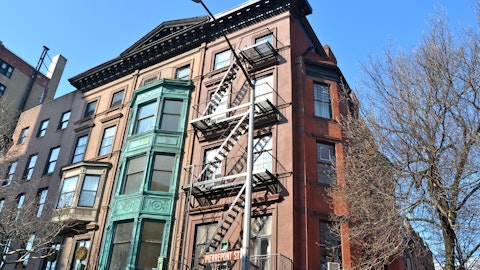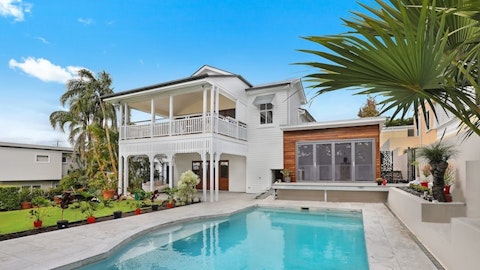In this piece, we will take a look at the 20 most underpriced housing markets in the U.S. For more markets, head on over to 5 Most Underpriced Housing Markets in the U.S.
Apart from the stock market, the housing market is one of the most crucially watched sectors of the American economy. Housing prices, not only in America but all over the world, are a key barometer of economic health. This is due to the fact that higher prices indicate that the public is relatively prosperous as it can afford to funnel out more funds for large purchases. Additionally, this rising demand also puts pressure on construction companies to build more houses. Since a variety of industries, such as cement, lumber, wiring, appliances, and more are connected to the housing industry, higher spending by the construction companies also ends up stimulating these sectors as well.
At the same time, recent developments in the U.S. and the global economy have also put the housing market under strain. Starting with the coronavirus pandemic, even though the pandemic induced a widespread economic slowdown, the housing market presented an interesting case study. Researchers from the University of Chicago show that lockdowns appear to have a direct impact on housing prices. They show that in the aftermath of the pandemic, housing prices grew the fastest in regions where people spent more time indoors. The researchers also break down the growth in housing prices and segment it based on the reasons for the growth. This reveals that half of the growth in housing prices in 2020 was due to lockdowns and stay at home mandates, with lower mortgages due to historically low interest rates fueling a smaller portion.
This phenomenon of the pandemic and lockdowns affecting home prices appears to be universal. This is due to the fact that the market in Norway collapsed almost immediately as the pandemic started to take its effects, and the drop took place before the lockdowns. The prices then recovered after the lockdowns were over.
Delving deeper into the American market, data from the Federal Reserve Bank of Dallas shows that the housing market was relatively resilient to the coronavirus shock than it was in the aftermath of the Great Recession of 2008 since home buyers were not sitting on loans waiting to go bad. It adds that stimulus spending by the U.S. government enabled households to stay afloat even as unemployment rose, and low mortgage rates enabled a large number of people to keep their homes. However, the aftermath of the pandemic would have far reaching and more devastating effects on the market, as prices jumped by as much as 19% as of December 2021. A big reason behind this growth was the fact that people assumed that prices would jump in the future as the economy recovered and ended up diving into home purchases – essentially creating a self fulfilling prophecy.
Additionally, another crucial trend that affected the housing market due to the pandemic is working from home. While lockdowns generated significant employment, at the same time, they also pushed large chunks of working people towards remote working. According to the Census Bureau, this ended up stimulating the demand for housing in remote areas, as people that were no longer restricted geographically through their workplaces moved to more affordable areas to improve their standard of living. Using data from the Zillow Home Value Index, the Bureau outlines that home sales dropped by 20% in 2020 and at the same time led to almost two million renters moving to new locations with cheaper rent. The net effect of this resulted in more people buying a home than renting it, and caused a sharp divergence between the buying and the renting indexes just as the pandemic hit.
Redfin shares the latest state of the U.S. housing market. It shares that home prices in America were down 3.4% in March 2023 annually, with the number of homes being sold down by 19.2%. The reason behind this is simple, as Redfin shares that the fixed rate mortgage currently sits at 6.5% and is up by a whopping 2.4 points annually. However, this drop in prices is not uniform across America, as several markets are experiencing double digit home price growth. Among these, some of the hottest markets are Fayetteville, North Carolina (15.7%), Myrtle Beach, South Carolina (15.4%), and Boca Raton, Florida (15.2%).
Finally, taking a look at the situation on the ground, the management of Toll Brothers, Inc. (NYSE:TOL) shared during the firm’s first quarter of 2023 earnings conference:
Over the past decade, the housing market has been driven by 75 million millennials entering their prime homebuying years. Baby boomers who have been buying homes as they retire and adopt new lifestyles and migration trends that have favored the Sunshine and Mountain states. At the same time, the U.S. has chronically underproduced new homes. Study after study has shown that home starts have not kept up with household formations for many years. And as a result, they now exists a deficit of anywhere between 3 million and 6 million homes in this country. This supply surge was obvious during the pandemic when buyer urgency surged, demand spiked and prices rapidly increased. It was less obvious in the second half of 2022 when the impact of the sharp and rapid increase in mortgage rates caused many prospective buyers to put their searches on pause.
Now, however, with the traditional spring selling season upon us and consumer confidence improving, buyers are coming off the sidelines. The most telling sign that these fundamentals are real and meaningful is the fact that rates didn’t have to go back to 3.5% or even 5.5% for buyers to come back out. In fact, this past week, we had the most deposits we have seen in a month even though rates had moved back up over 6.5%. The improvement in demand is playing well into the strategy we outlined on our December call. In the second half of fiscal ’22, with demand inelastic in many markets, that is buyers were not all that moved by price concessions. And with extended delivery times and elevated building costs, we chose not to chase the market down.
With these details in mind, let’s take a look at some of the most underpriced housing markets in America right now.

Our Methodology
To compile our list of the most underpriced housing markets in America, we first used the average home value in the U.S. courtesy of Zillow. Then, we used median home price data from Rocket Homes, and compiled all the states with prices below the average home price. Then the bottom twenty states in the list were selected as part of our coverage of the 20 most underpriced housing markets in America.
Most Underpriced Housing Markets in the U.S.
20. South Dakota
Median Home Price: $239,000
South Dakota is one of the least populated areas in America. In terms of population, it is the fifth least populous American state.
19. Pennsylvania
Median Home Price: $234,800
Pennsylvania is one of the largest states in America in terms of population with more than thirteen million people living in the country. This makes it densely populated especially since it is one of the smallest in terms of area.
18. Illinois
Median Home Price: $234,000
Illinois is an economic hub in America with one of the largest gross domestic products. It is also a highly densely populated area.
17. Tennessee
Median Home Price: $231,600
Tennessee houses roughly seven million people and it is one of the most geographically diverse regions in America. The state has some of the lowest tax rates in America.
16. Wisconsin
Median Home Price: $231,300
Wisconsin is a Midwestern state, whose economy is dominated primarily by the retail industry. It was one of the late joiners to the Union and was admitted in the 19th century.
15. South Carolina
Median Home Price: $223,400
South Carolina is another small American state with a population of a little over than five million people. It was one of the first states to join the United States.
14. Michigan
Median Home Price: $207,800
Michigan is one of the largest states in America in terms of both area and population. It houses more than ten million people and plays a crucial role in the car manufacturing industry.
13. Nebraska
Median Home Price: $205,200
Nebraska is one of the smallest states in America in terms of population, with roughly two million residents. It was also one of the last states to join the Union.
12. Missouri
Median Home Price: $194,000
Missouri is another Midwestern state. It has a midsized economy and a large aerospace industry.
11. Louisiana
Median Home Price: $189,200
Louisiana is a Southern American state which has a large port and a vibrant agriculture industry.
10. Indiana
Median Home Price: $186,100
Indiana houses several Fortune 500 companies, with one of the most famous being the drug maker Eli Lily.
9. Ohio
Median Home Price: $179,700
Ohio is one of the most populated states in America, with roughly twelve million people living in its boundaries.
8. Kansas
Median Home Price: $177,400
Kansas has a population of just 2.9 million people and a strong presence in the aviation and telecommunications industries.
7. Kentucky
Median Home Price: $165,900
Kentucky plays a crucial role in American automobile manufacturing and nuclear power generation.
6. Alabama
Median Home Price: $165,200
Alabama is a Southeastern U.S. state and has a strong presence of the U.S. military.
Click to continue reading and see 5 Most Underpriced Housing Markets in the U.S.
Suggested Articles:
- 25 Best US Cities for People With Allergies
- 20 Fastest-Growing Cities in the Midwest
- 20 Fastest-Growing Cities in the Southeast
Disclosure: None. 20 Most Underpriced Housing Markets in the U.S. is originally published on Insider Monkey.





